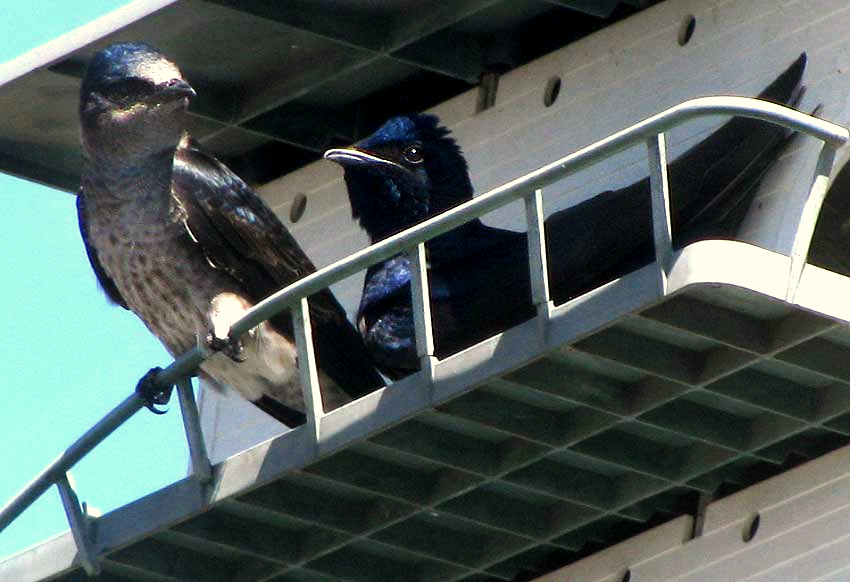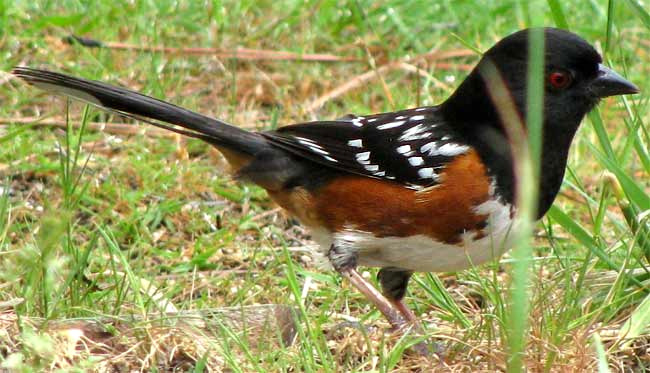THE CHALLENGE OF SIMILAR SPECIES
The US state of Florida is home to about 17 species of sparrow, most of which are small, brownish birds with thick beaks; Texas has about two dozen duck species, many of them quite similar; in Michigan, you can see about 36 species of warbler, many of which can be confused with one another, especially in their fall plumage.
With these observations in mind, here's a story about using "field marks" during the identification process:
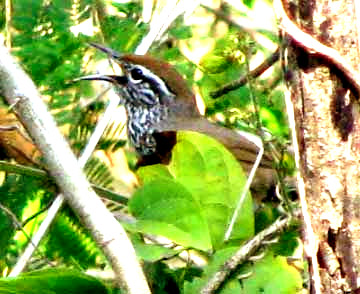
Once on a birding trip in Mexico I was having problems getting the small wrens straight. They were all brownish, short-tailed birds, usually with eye stripes, beaks that were slender, sharp and slightly down-curved... One of those wrens, the Spot-breasted, is shown at the right. Based on illustrations in my field guide, which included several more small wrens than the seven I was having trouble with, I made the following sketch to help fix in my mind what the various species' field marks were:
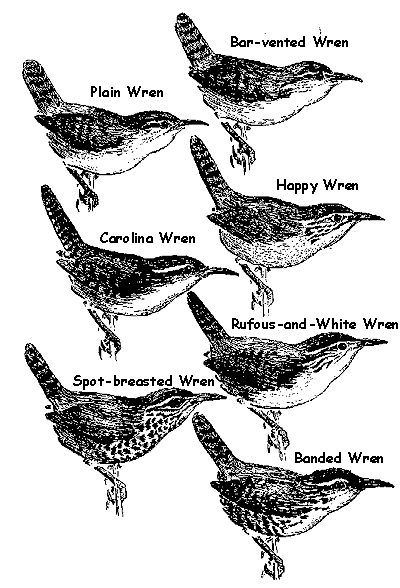
The top two species were especially hard to keep straight. However, notice that my field guide and thus in my drawing the Plain Wren had a pale lower back area (referred to as the rump among birders) while the Bar-vented Wren's rump area was dark. I started repeating to myself again and again, "The Plain Wren's field mark is its rump being paler than its back." That made me feel better, but I kept running into birds I just couldn't decide about.
In general, this manner of focusing on a species' main field marks is not only helpful but essential. And it works not only with individual species, but also groups of birds. Finches have short, thick beaks, but wood-warblers short, thin ones.
LEARN CLUSTERS OF DETAILS
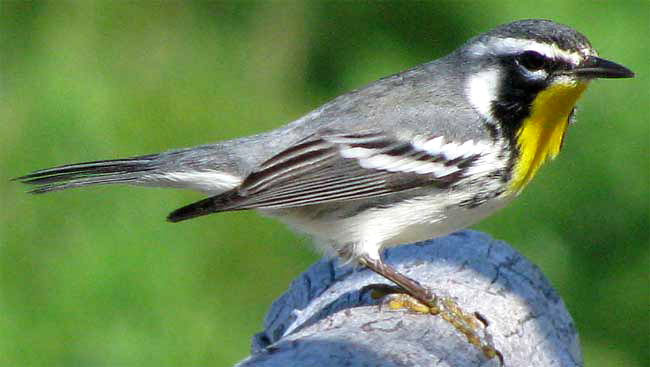
However, lots of birds other than finches have short, thick beaks, and wood-warblers aren't the only ones with short, thin ones. You learn to "cluster" your field marks. Like the Yellow-throated Warbler at the right, wood-warblers often have short, thin beaks, tend to be in trees, often sing complex songs, often have combinations of yellow, white and black, often have wingbars, maybe eyes stripes or eye rings, etc. Of course there are exceptions.
Most field guides group their birds so that, for instance, hawks are in one section of the book, ducks in another, woodpeckers in another. Usually they also provide general descriptions of each grouping. Robbins' Birds of North America, for instance, begins the Sparrows section with a reminder that "Sparrows are small, brown-bodied birds with streaked backs and short conical beaks," and then information about food and other matters follows. This kind of information is valuable, and the beginner needs to review it again and again, and pay attention to the exceptions when encountered in the field.
SOMETIMES YOU JUST CAN'T DO IT
The story about my having had problems distinguishing between the Plain Wren and Bar-vented Wrens didn't end with my drawing and continuing confusion. Years after my first encounter with the very similar Plain and Bar-vented Wren species, I learned that the Plain Wren, Cantorchilus modestus, had been divided into three distinct species, now known as the Cabanis's Wren (C. modestus), the Canebrake Wren (C. zeledoni), and the Isthmian Wren (C. elutus).
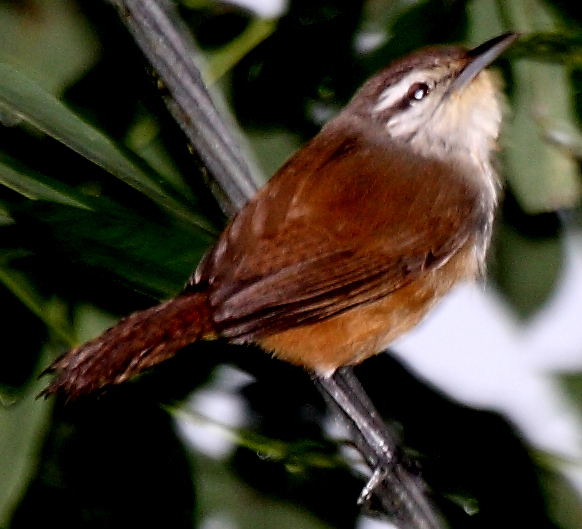 Isthmian Wren, Cantorchilus elutus; image taken in Panama; picture use courtesy of Dominic Sherony and Wikimedia Commons
Isthmian Wren, Cantorchilus elutus; image taken in Panama; picture use courtesy of Dominic Sherony and Wikimedia CommonsMoreover, pictures of the species on the Internet don't show particularly pale rumps. And published expert opinion is that the plumage and morphological differences between the three speciers are very few. C. modestus shows variation over its range, and in the field "is almost impossible to separate from C. elutus." We can have confidence in the C. elutus identification used at the right, though, because that bird was seen in Panama, and the distribution of same-looking C. modestus extends only to Costa Rica, we're told. This is important: Paying attention to species distribution is just about as important as using field marks.
With genetic analysis, this kind of thing is happening more and more nowadays. The phenomenon of "cryptic speciation" is being recognized among many kinds of living things, not only birds. Cryptic speciation is when two or more species look exactly alike, may even occupy the same geographic area, but don't interbreed, so they do qualify as independent species.
A 2015 research paper by Saitoh and others appears on the PubMed.Gov website with this title: "DNA barcoding reveals 24 distinct lineages as cryptic bird species candidates in and around the Japanese Archipelago."
The implications are clear for those of us who like neat lists of species whose names we are absolutely sure of: Nature turns out to be more squishy than we thought; We can't be too sure about anything, other than that watching birds and organizing our thoughts and feelings about them sure is rewarding, and a very good thing to do.
